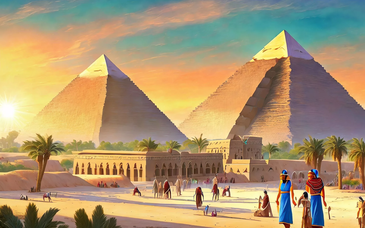
Charles Pomeroy Stone, sometimes called the “American Dreyfus,” perhaps had the most to prove by going to Egypt. A graduate of West Point, he was a veteran of the war with Mexico, worked briefly as a banker, and then turned to surveying, exploring Sonora and Lower California during the late 1850s (where he was accompanied by Erastus Sparrow Purdy, who would also serve under Stone in Egypt). In 1860, Stone was asked by General Winfield Scott to organize the defenses of a dangerously undermanned Washington, D.C., becoming the first soldier of the Union’s volunteer army. His men stood guard while Abraham Lincoln took the inaugural oath on March 4, 1861. (He later wrote about his experiences in “Washington on the Eve of the War,” the introduction to Battles and Leaders of the Civil War.) While Stone deserves much credit for keeping the capital in Union hands, he had antagonized the press, the Radical Republicans in Congress, and Lincoln’s new Secretary of War, Edwin Stanton. Following an early Union military blunder at Ball’s Bluff, the Radicals and Stanton made a scapegoat of Stone and imprisoned him for six months, even though no charges were ever filed against him. In 1863, Stone was assigned to duty in Louisiana (where he served as chief of staff to General Nathaniel Banks), but was again unfairly blamed for the Union’s lack of success. Demoted to Colonel, he eventually resigned his commission and became a mining engineer. Stone did have some influential friends; he was one of the first officers recommended by William Sherman for service in the Egyptian army. Stone served the Khedive well, implementing a general staff, expanding Egypt’s boundaries, and establishing schools for the education of Egypt’s soldiers and their children. He remained in the service of Khedive Ismail (and Ismail’s successor, son Tewfik) for 13 years. When the British bombarded Alexandria, and Arabi led the revolt of the Egyptian army, Stone stayed with Tewfik in Alexandria, even while his wife and daughters were trapped in Cairo. (Fanny Stone kept a diary that relates the family’s adventures.) In 1886, Stone would undertake his most important task: he was named chief engineer in charge of erecting the new Statue of Liberty in New York Harbor. He was aided by two of his fellow veterans from Egypt, Samuel Lockett and James Morgan. Stone oversaw design and construction of the foundation and pedestal, as well as the final assembly of the statue. When the work was finished, Stone was given the honor of serving as grand marshal during the dedication ceremonies on Oct. 28, 1886. Ironically, he caught a chill during the festivities and died on January 24, 1887, less than a month after his old friend William Loring. Stone is buried at West Point. Stone’s son, John (who grew up in Egypt) was a pioneer in the field of wireless telegraphy.


